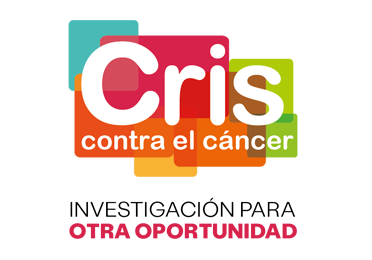Based on the genomic analysis of 6 tumor types, VHIO´s Translational Genomics Group has established that breast tumors of the basal-like subgroup not only constitute a unique type of cancer, but also seem to share more similarities to squamous cell lung cancer than to other breast tumors.
Barcelona, December 18, 2013. A study led by the Vall d’Hebron Institute of Oncology’s (VHIO) Translational Genomics Group in Barcelona has shown that the basal-like type of breast cancer has certain molecular characteristics that establish it as a unique type of cancer. In addition, the research team has discovered that this breast cancer subgroup is genomically more similar to squamous cell lung cancer than to other breast tumors. The study has genomically analyzed 6 types of cancer and has identified certain molecular alterations that occur in different tumor groups regardless of their organ of origin. Identifying the alterations that are common among two or three cancer types could be important in the future design of more specific drugs against therapeutic targets, regardless of the organ of origin of the tumor.
This study led by Aleix Prat, Principal Investigator of VHIO´s Translational Genomics Group and medical oncologist at the Vall d’Hebron University Hospital’s Breast Cancer Unit, which is headed by Javier Cortés, has today been published in the journal Scientific Reports. The study compared the molecular profile of 18,000 genes in 6 different types of cancer (breast, ovarian, brain and colorectal cancers, lung adenocarcinoma and squamous cell lung cancer). One of the initial conclusions of the research is that basal-like breast cancer differs more from other breast tumors than was previously thought: “This finding means that the group of basal-like tumors should no longer be considered as another subtype of breast cancer, but instead as a distinct tumor type with unique biological characteristics, which are more similar to those of squamous cell lung cancer than to other breast tumors,” says Aleix Prat.
Nowadays, basal-like breast cancer is clinically classified as triple-negative breast cancer, characterized by expressing neither of the two hormone receptors nor the HER2 receptor. The clinical course and response to treatment of triple-negative tumors differ immensely from those of other breast tumors (HER2-positive or hormone-sensitive breast cancer). As Javier Cortés explains: “These genomic results reinforce the clinical observation that we’ve always maintained: the treatment response and behavior of triple-negative breast tumors are very different from other breast tumors and are more similar to tumors of other organs. We are currently conducting clinical trials for this subgroup of patients.”
Surprisingly, basal-like breast tumors share many genomic similarities with squamous cell lung cancer. This suggests that the cell of origin of each of these two types of cancer has a similar function and location, both in the lung and in the breast. In fact, the data indicate that the cell of origin could be found in the basal layer of the epithelium of both organs. Clinically, the two tumor types are also similar because they often respond to the same chemotherapy regimens and generally have a poor prognosis if they do not respond to treatment.
As part of The Cancer Genome Atlas (TCGA) project, which is aimed at determining the molecular bases of cancer, this study has analyzed genomic data from 18,000 genes and 1,707 tumors belonging to 6 types of cancer. In addition to the study on basal-like breast cancer, Alexi Prat’s team has noted that there are molecular alterations in several tumor groups regardless of their organ of origin. This fact was highlighted in a recent publication by Cortés, indicating a conceptual shift in the approach to dealing with cancer.
Josep Tabernero, Director of VHIO, affirms: “These data reinforce the need to conduct clinical trials based on the presence or absence of a genomic alteration and not so much based on the location or origin of the patient’s tumor. At VHIO we are conducting clinical trials based on this concept and are seeing very promising results. For example, treatments in patients with different tumors but with the common link of having an alteration in a particular oncogene, such as HER2 or BRAF, treated in the same study — referred to as umbrella or basket studies.”








